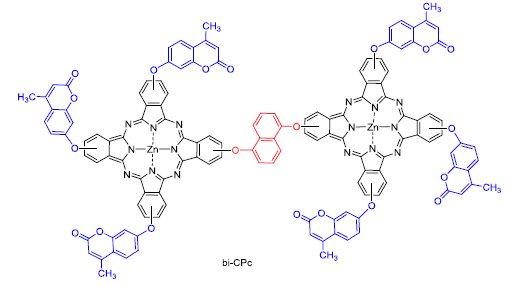| [1] O'Regan, B.; Grätzel, M. Nature 1991, 353, 737
[2] Grätzel, M. J. Photochem. Photobiol. A 2004, 164, 34
[3] He, J.-J.; Chen, Y.-S.; Wang, T.-T.; Zeng, H.-P. Org. Chem. 2012, 32, 472 (in Chinese).(何俊杰, 陈舒欣, 王婷婷, 曾和平, 有机化学, 2012, 32, 472.)
[4] Hou, Y.-J.; Xie, P.-H.; Zhang, B.-W.; Cao, Y.; Xiao, X.-R.; Wang, W.-B. Inorg. Chem. 1999, 38, 6320.
[5] Horiuchi, T.; Miura, H.; Uchida, S. J. Photochem. Photobiol. A: Chem. 2004, 164, 29.
[6] Hara, K.; Kurashige, M.; Ito, S.; Shinpo, A.; Suga, S.; Sayama, K.; Arakawa, H. Chem. Commun. 2003, 252.
[7] Karthikeyan, C. S.; Peter, K.; Wietasch, H.; Thelakkat, M.; Energy, M. Sol. Cells 2007, 91, 432.
[8] Hara, K.; Sayama, K.; Ohga, Y.; Shinpo; Suga, S.; Arakawa, H. Chem. Commun. 2001, 569.
[9] Kitamura, T.; Ikeda, M.; Shigaki, K.; Inoue, T.; Andenson, N. A.; Ai, X.; Lian, T. Q.; Yanagida, S. Chem. Mater. 2004, 16, 1806.
[10] Hwang, S.; Lee, J. H.; Park, C.; Lee, H.; Kim, C.; Lee, M. H.; Lee, W.; Paka, J.; Kim, K.; Park, N. G.; Kim, C. Chem. Commun. 2007, 4887.
[11] Hara, K.; Miyamoto, K.; Abe, Y.; Yanagida, M. J. Phys. Chem. B 2005, 109, 23776.
[12] Wang, Y.-Q.; Lu, X.; Wei, X.-D.; Wu, W.-J.; Xie, Y.-S. New J. Chem.2014, 38: 3227.
[13] Mathew, S.; Yella, A; Gao, P.; Humphry-Baker, R. Nat. Chem. 2014, 6, 242.
[14] Takuro, L.; Hirotaka, N.; Naruhiko, M.; Matthew, J. G.; Shogo, M.; Mutsumi, K. Chem. Commun. 2014, 50, 1941.
[15] Mao, L.-J.; Tan, Q.-L.; Xing, G.-Q.; Han, M.-L.; Zhang, X.-J. Chin. J. Org. Chem. 2012, 32, 2315 (in Chinese).(毛利军, 谭青龙, 新冠琼, 韩明亮, 张学俊, 有机化学, 2012, 32, 2315.)
[16] Kc, C. C.; Stranius, K.; Dsouza, P. J. Chem. Phys. 2013, 117, 763.
[17] Camur, M.; Ahsen, V.; Durmus, M. Photochem. Photobiol. A: Chem. 2011, 219, 217.
[18] Han, L.; Zhou, X.; Ye, Q.; LI, J.-Y.; Gao, J.-R. Chin. J. Org. Chem.2013, 33, 1000 (in Chinese).(韩亮, 周雪, 叶青, 李郁绵, 高建荣, 有机化学, 2013, 33, 1000.)
[19] Peng, Y.-R.; Huang, F.-H. Strait Pharm. J. 2003, 15, 53 (in Chinese). (彭亦如, 黄风华, 海峡药学, 2003, 15, 53.)
[20] Han, M.-L. M.S. Thesis, North University of China, Taiyuan, 2015 (in Chinese).(韩明亮, 硕士论文, 中北大学, 太原, 2015.)
[21] Leeuw, D. M.; Simenon, M. M. J.; Brown, A. R. Synth. Met. 1997, 87, 53. |
